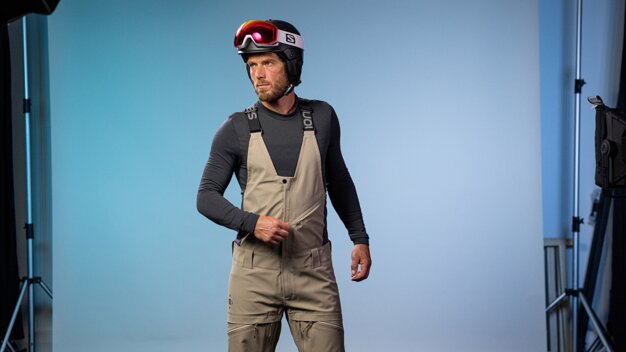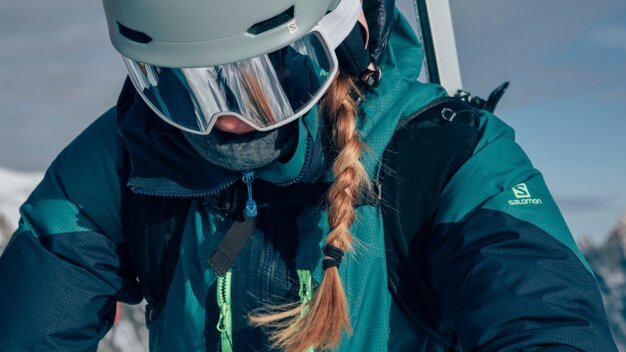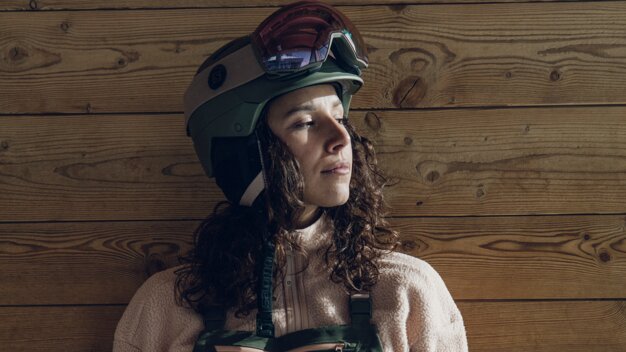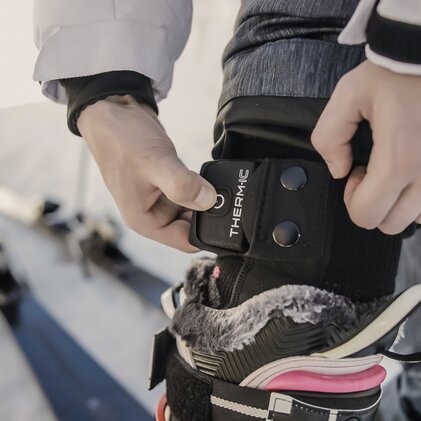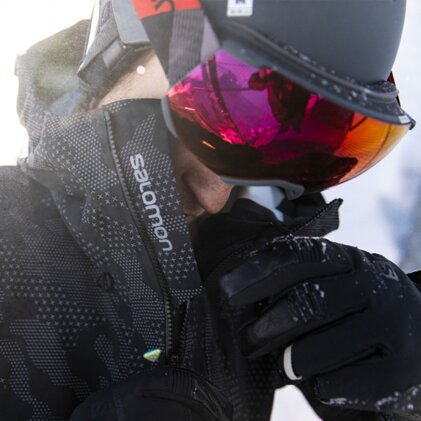
A great day on the mountain, ski touring or carving can make you sweat a lot. When you get on the chairlift and find your sweaty clothes clinging to your body and you suddenly feel cold, you need to know how to find the perfect ski underwear.
Together with the experts from Salomon, we take a look at the right base layer for men and women. We also talk about their function, which materials are the best, how ski underwear should fit and what role it plays in layering.
What is a base layer and why is it important?
If you are a fan of outdoor sports, you may have heard of the onion principle or layering. Three layers are a real super weapon against the cold, especially when skiing.
The important thing is that each layer has a specific function. If you can't remember what these are, we'll give you a quick rundown of the onion look:
- Base layer: transports sweat away from the body
- Mid layer: stores body heat
- Hard shell: protects against wind, rain and snow
These three layers can be combined in any way you like. Depending on the weather, the outside temperature, or your level of exertion, you can take off one layer and put on another.
What’s the difference: Base layer, thermal underwear or ski underwear
There are many terms used to describe the perfect ski underwear. However, they are all synonyms for each other, meaning that there is no functional difference between ski underwear, thermal underwear, or a base layer.
Why you need ski underwear for your outdoor activities
Your body temperature is normally around 36 to 37 degrees Celsius. During sport, your heart beats faster and the movement of your muscles increases this temperature. The body reacts by sweating. The aim of this is to cool the skin in order to lower the body temperature again. This is actually a useful function, but it can spoil your day's skiing. As soon as the overlying layers get wet and the moisture is not effectively wicked away, the outside temperature cools the wet clothing down so much that you get too cold.
It is therefore important to choose ski underwear materials that allow moisture to be quickly transferred to the layers above.
These items of clothing are part of ski underwear
To keep you cosy and warm from head to toe, your base layer should consist of the following components:
- A pair of high-quality ski socks
- A longsleeve or shirt
- Thermal tights
- alternatively a one-piece suit
Tip: When choosing your underwear, don't just go for the look. As these are functional layers, performance should be a high priority. So, choose both: the right materials and the right fit. Neither functionality nor comfort should suffer.
The right material plays an important role in finding the perfect ski underwear
Choosing the right textile for a base layer is more important than you think. You can choose from three types of materials:
The properties of natural fibres at a glance
Natural fibres such as merino wool are particularly popular as they provide excellent warmth even when damp and remain odourless. It is well suited to people who attach great importance to comfort and sustainability. However, unlike synthetic fibers, they do not dry as quickly.
Advantages and disadvantages of merino wool summarised:
- Soft
- Natural
- Excellent moisture transport
- Very good thermoregulation
- Odour resistant
- Elastic
- Takes longer to dry
- Can shrink easily
The advantages and disadvantages of synthetic fibres
Synthetic materials such as polyester or polypropylene, on the other hand, are extremely breathable, dry quickly and wick moisture away efficiently. They are well suited to sports activities that involve intense sweating.
Advantages and disadvantages of synthetic fibres summarised:
- Soft
- Lightweight
- Elastic
- Optimum moisture transport
- Quick drying
- Slightly less good thermoregulation
- Odour-prone with infrequent washing
Ski underwear made from a mix of materials - the best of both worlds
A hybrid version that combines the advantages of both materials can be found in many modern base layers. These are often made of merino wool with a proportion of synthetic fibres, which improves comfort and functionality.
Tip: Those with sensitive skin or who are travelling in cold conditions for long periods of time often benefit from natural merino wool. Active skiers or athletes who sweat quickly and need high breathability are more likely to opt for synthetic materials or hybrid solutions.
What properties do good base layers need to have?
When searching, bear in mind that many individual factors play a role in finding the perfect ski underwear:
- Fit - different body shapes require individual cuts.
- Degree of warmth - the sensation of cold varies from person to person.
- Sweating - people sweat to different degrees.
- Freedom of movement - those who go on alpine ski tours have different needs on the stretchability of the materials than someone who spends his day on the slopes.
Tip: If you are unsure about the materials, our RENTertainers look forward to your visit. They are winter sports experts and know the products inside out. Tell them about your planned activities and they will help you find the perfect ski underwear.
Differences between ski underwear for men and women
Base layers for men and women vary mainly due to anatomical differences, which are taken into account in the patterns. Women have a distinct body shape, especially in terms of the waist, hips and chest area, while men need more room around the belly and shoulders. To ensure a better fit and more comfort, ski underwear is tailored to gender-specific needs. This ensures that it does not slip or pinch uncomfortably. These adjustments also optimise freedom of movement.
There are also differences in terms of functionality: women tend to sweat in other places than men, especially in the hip area, which is why many models have specially reinforced zones for moisture management and thermal insulation. Men, on the other hand, often need more insulation in the upper body area and a slightly looser fit. Both sexes benefit from specially developed models that fulfil both the anatomical needs and the specific requirements during sporting activities.
Frequently asked questions to find the perfect ski underwear
Should ski underwear be close-fitting?
Ski underwear should be close-fitting but not constricting. A tight fit ensures that it optimally wicks moisture away from the skin, which is particularly important in cold temperatures. However, a base layer that is too tight can restrict freedom of movement and rub uncomfortably. If it’s too loose, on the other hand, the moisture will not be wicked away quickly enough and insulation suffers.
What do you wear under your ski underwear?
No other layers should be worn under ski underwear, as the base itself should be the first, close-fitting layer against the skin. Its function of wicking away moisture and retaining heat cannot be guaranteed if there is another type of clothing under the ski underwear. If you are feeling cold, a thicker mid layer or ski underwear made from a different material may be the right choice.
Do I have to wear thermal underwear under my ski trousers?
Yes, wearing a base layer under your ski trousers is generally a good idea, especially on cold days. It provides additional warmth without restricting you too much. It effectively wicks away moisture and keeps your skin dry, which is important on longer days on the slopes. As soon as it gets warmer, the ski trousers alone are often enough to protect you adequately.
INTERSPORT Rent tip
The RENTertainer recommends
Have you found your perfect base layer yet? Congratulations! Then how about a high-quality mid layer or a hard shell jacket for protection against wind and weather? At INTERSPORT Rent you'll find ski jackets from leading manufacturers that will keep you warm.
Our RENTertainers on site will be happy to show you the best products for your needs and answer any questions you may have.

